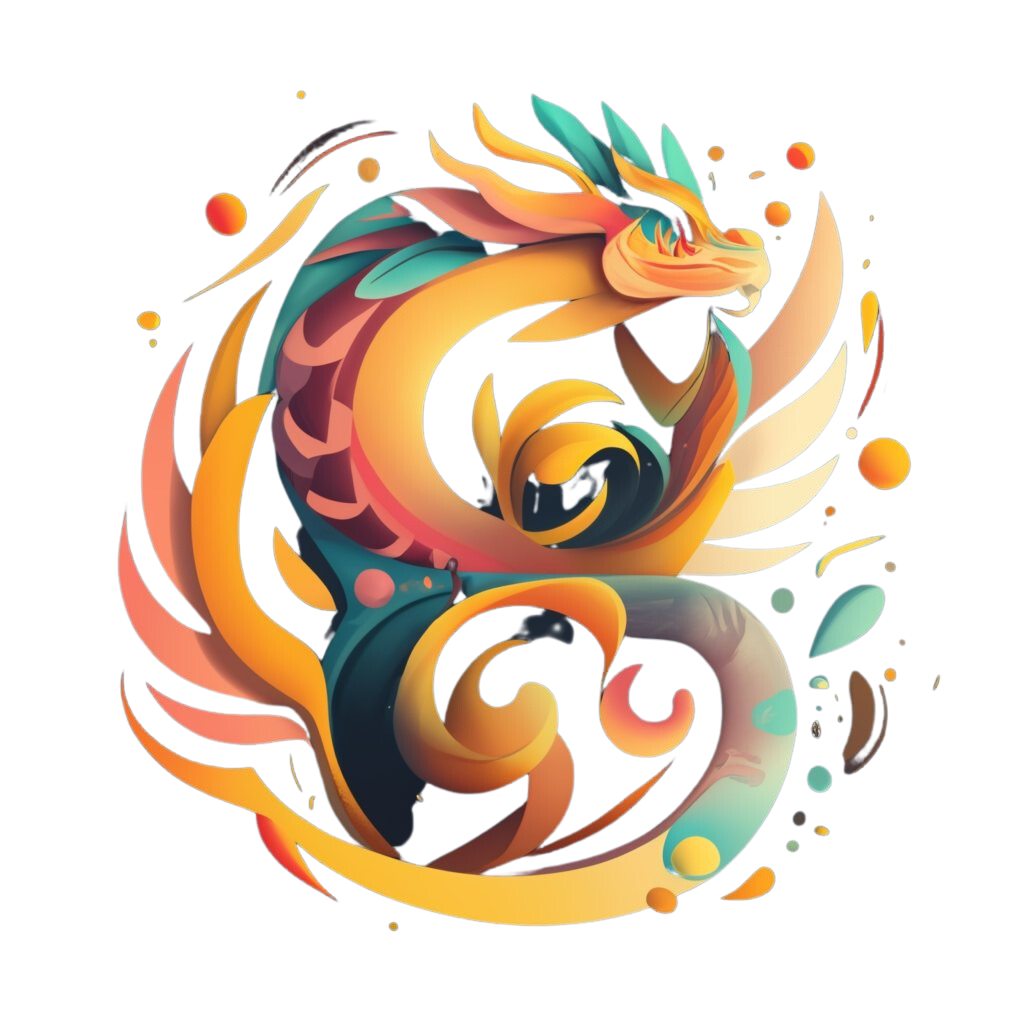Get ready to explore the magical world of Korean folklore. Here, ancient stories of supernatural beings come to life. You'll meet majestic dragons and playful goblins, all part of Korea's rich cultural heritage.
But what do these legends really mean? What secrets do they hold? And how do they shape our understanding of Korean identity today?
Key Takeaways
- Explore the deep roots of Korean folklore, tracing its origins and cultural significance.
- Discover the diverse range of mythical creatures that populate the Korean imagination, from celestial dragons to shape-shifting spirits.
- Understand how traditional literature and beliefs have influenced the enduring legacy of Korean mythology.
- Delve into the symbolic power and regional variations of specific Korean mythical figures.
- Examine the modern interpretations and adaptations of these ancient tales in popular culture.
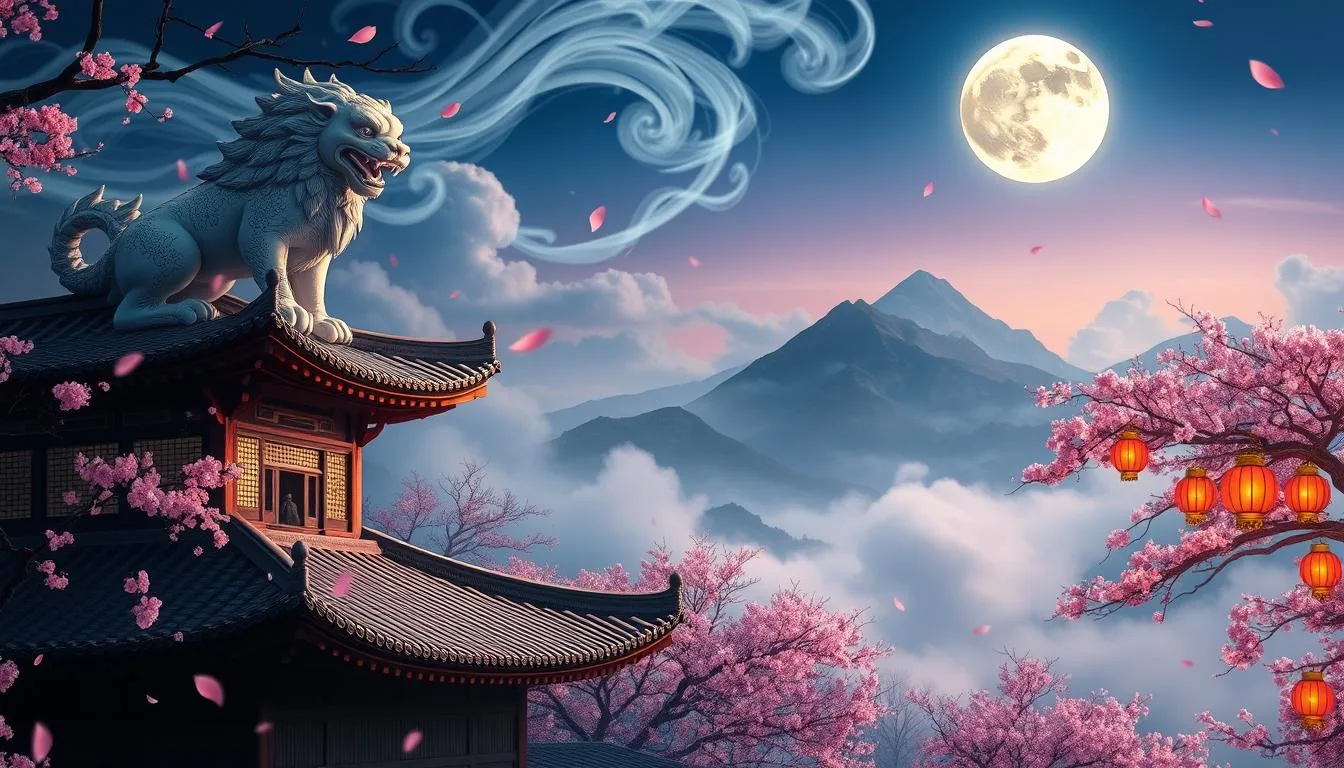
Origins and Cultural Significance of Korean Folklore
Korean mythology and folklore are deeply rooted in the country's rich spiritual and cultural heritage. Ancient shamanism, Buddhism, and Confucianism have shaped Korean myths and legends. These influences have created a diverse tapestry of stories.
Ancient Shamanic Influences
At the heart of Korean folklore is the lasting impact of shamanism. This ancient spiritual tradition has deeply influenced the Korean people. Shamans, known as "mudang," were believed to communicate with the spirit world. Their rituals and beliefs are a big part of Korean mythology.
Buddhist and Confucian Elements
Buddhism and Confucianism have also left their mark on Korean myths. Buddhist deities and concepts have been incorporated into folklore. Confucian principles of social hierarchy and harmony have shaped the stories of mythical beings and their interactions with humans.
Regional Variations in Korean Mythology
The diversity of regional myths across Korea adds to the richness of folklore. Local legends and traditions reflect the unique geography, culture, and history of different areas. This creates a vibrant tapestry of stories that show the dynamic nature of Korean storytelling.
| Mythological Influence | Key Elements |
|---|---|
| Shamanism | Mudang (shamans), spirit communication, ritual practices |
| Buddhism | Deities, concepts of reincarnation and enlightenment |
| Confucianism | Social hierarchy, moral principles, ancestor veneration |
| Regional Variations | Diverse local legends, traditions, and geographical influences |
Korean Mythical Creatures in Traditional Literature
Korean mythology is deeply rooted in the nation's literature. Mythical creatures are key in classic folk tales, texts, and oral traditions. They have fascinated Koreans for many years, sharing cultural values, history, and wisdom.
The Samguk Yusa is a famous Korean mythological text. It tells the stories of dragons, goblins, and other supernatural beings. This work is a treasure trove of Korean mythology.
Korean oral traditions have kept the myths alive for generations. Tales like the story of Yong, the celestial dragon, are part of Korean culture. They help people understand the world and their place in it.
These creatures, influenced by shamanism, Buddhism, and Confucianism, still enchant today. They inspire artists, writers, and filmmakers to bring these legends to life for a new audience.
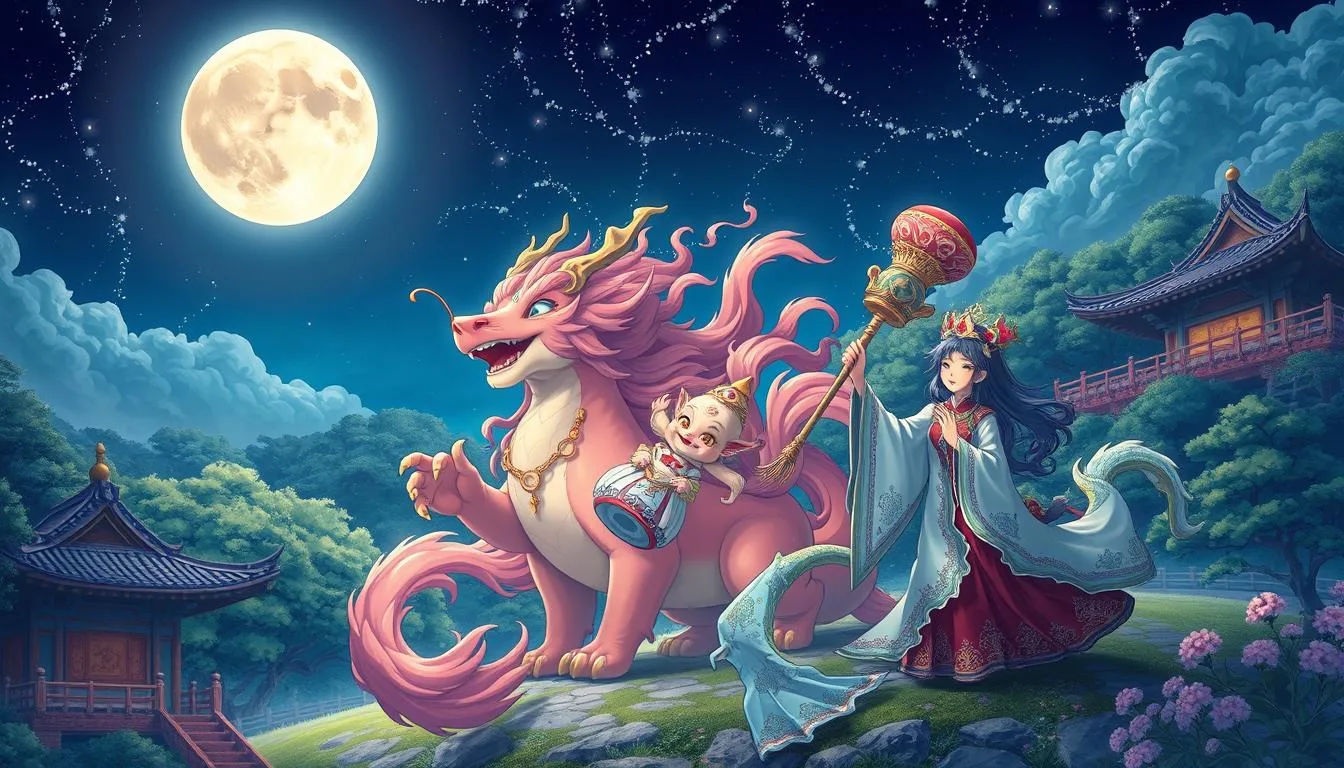
Dragons in Korean Mythology: Symbols of Power
In Korean mythology, dragons are highly respected. They symbolize power, wisdom, and divine authority. We explore the stories of the Yong, water dragons, and the Dragon Kings of the Four Seas.
Yong: The Celestial Dragon
The Yong, or celestial dragon, is a key figure in Korean myths. It lives in the heavens and is seen as kind and powerful. It controls the elements and brings blessings to people.
These Korean dragons are linked to wealth, prosperity, and luck. They play a big role in many traditions and rituals.
Water Dragons and Their Domains
Korean myths also tell of water dragons and their homes. These dragons live in seas, rivers, and lakes. They protect these places and all who live there.
The dragon symbolism in these stories shows nature's power and the need to respect it. It teaches us to live in harmony with the natural world.
Dragon Kings of the Four Seas
The Dragon Kings of the Four Seas are at the top of the Yong world. They rule the seas and all its creatures. They are known for their wisdom and power over the tides and weather.
These legends have inspired many Koreans. They show the lasting impact of Korean dragons on the country's culture.
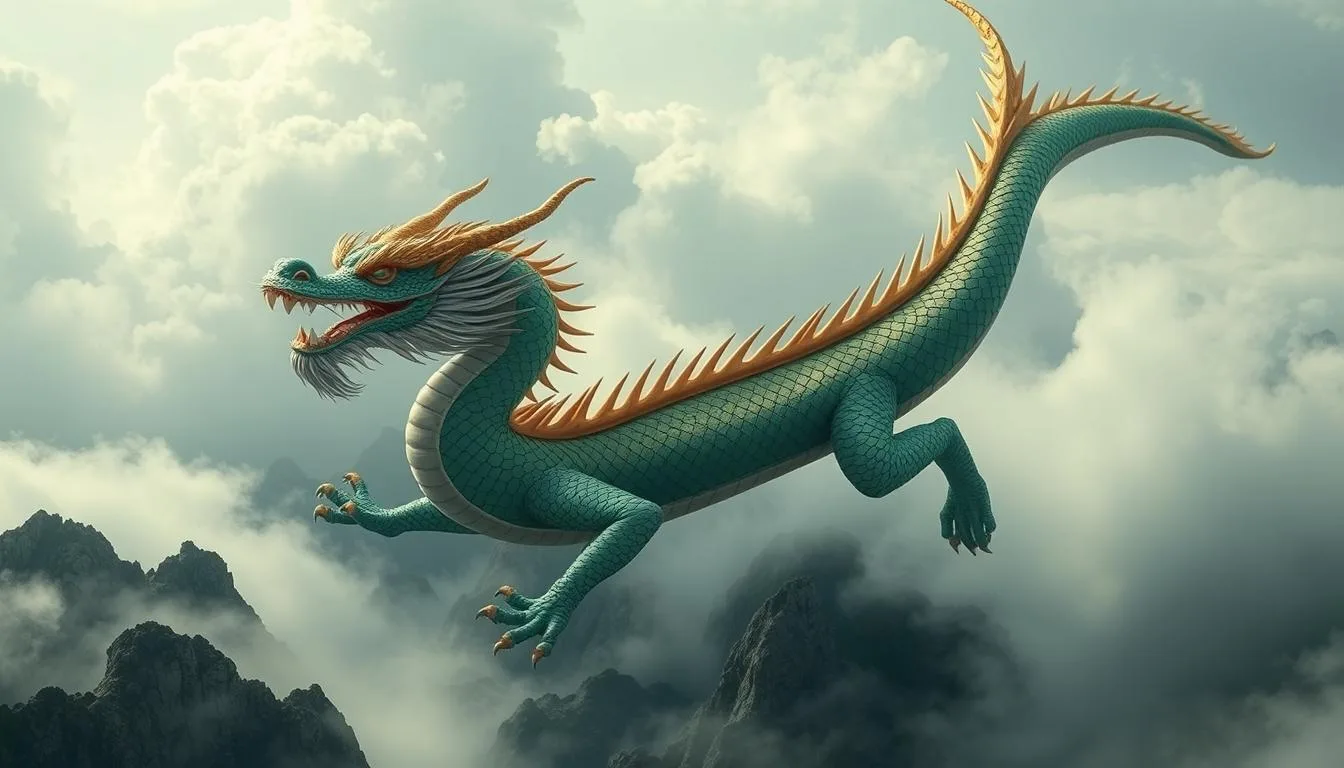
Dokkaebi: The Mischievous Korean Goblins
In Korean folklore, the Dokkaebi are fascinating and playful supernatural beings. They are known as trickster spirits. Their antics have captured the hearts of many for generations.
These goblins look like humans but have big noses or horns. They can change shape at will. They love to play tricks and ignore human rules.
Stories of Dokkaebi in Korean tales are common. They play pranks in homes and compete with people. Their impact on Korean culture is huge.
The "Dokkaebi Bridge" story is famous. Dokkaebi challenge travelers to tug-of-war. Winners get to cross, losers face their tricks. This shows their playful side and power.
Dokkaebi are more than just troublemakers. They can bring luck or disaster. Their dual nature keeps people interested in these goblins.
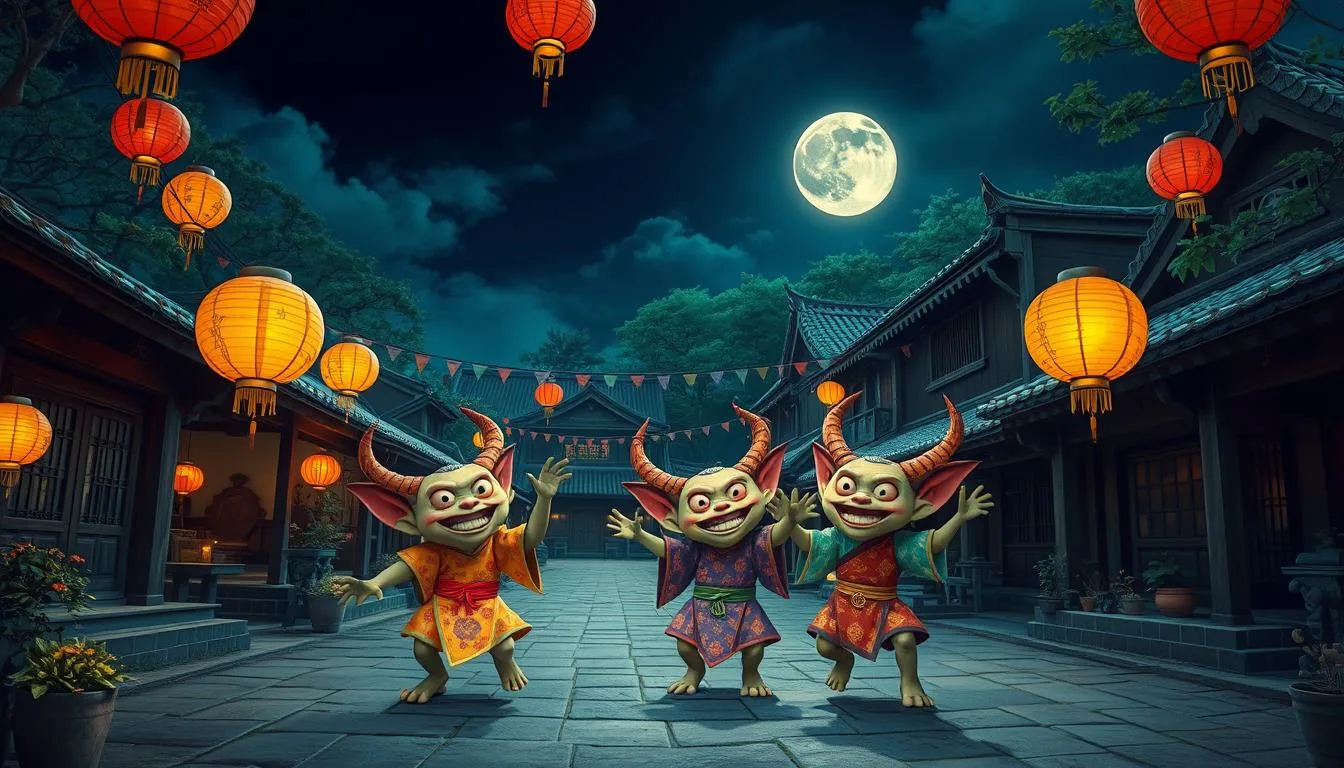
Sacred Animals and Guardians
Korean mythology is filled with sacred animals and guardian spirits. These creatures have protected the land and its people for centuries. The Haetae, Samjogo, and Girin are three iconic creatures with deep symbolic meanings.
Haetae: The Mythical Lion-Dog
The Haetae is a legendary creature that looks like a lion and a dog. It is believed to guard against fire and natural disasters in Korean folklore. This powerful protector is often shown as a large, fierce animal with a lion-like mane and a dog's body.
Samjogo: The Three-Legged Crow
The Samjogo, or the three-legged crow, is a famous guardian spirit in Korean mythology. It is thought to keep evil spirits away and bring good fortune. The Samjogo is linked to the sun and seen as a divine messenger between the heavens and earth.
Girin: The Korean Unicorn
The Girin, also known as the Korean unicorn, stands for purity, wisdom, and kindness. It is said to appear only in times of peace and prosperity. Its presence is believed to bring harmony and wealth to the land and its people.
These sacred animals and guardian spirits are key parts of Korean folklore. They have become a big part of the country's culture. They still inspire many artistic and literary works that celebrate Korean mythology.
Shape-Shifting Spirits and Forest Dwellers
In Korean mythology, shape-shifting spirits and forest creatures have always fascinated people. The Kumiho and Gumiho, nine-tailed foxes, are famous for turning into beautiful women.
These spirits, linked to the forest, have many powers. They can change their looks, control elements, cast illusions, and even influence human minds. The Kumiho and Gumiho seek human life force, making their encounters with humans both captivating and perilous.
| Mythical Creature | Abilities | Significance |
|---|---|---|
| Kumiho | Shapeshifting, illusion casting, mind control | Renowned as the nine-tailed fox spirits in Korean folklore, often depicted as beautiful women who prey on human life force. |
| Gumiho | Shapeshifting, elemental manipulation, seduction | Closely related to the Kumiho, the Gumiho are shape-shifting fox spirits that can take human form and are known for their cunning and seductive nature. |
Korea's forests are also home to many other shape-shifting spirits and creatures. These beings, rooted in Korean shamanism and folklore, still enchant people today. They inspire stories of wonder, danger, and the eternal connection between humans and the supernatural.
Immortal Beings and Mountain Spirits
In Korean mythology, immortal beings and mountain spirits are highly respected. They are deeply connected to the country's shamanic traditions and landscapes. For centuries, they have fascinated the Korean people.
Sanshin: The Mountain God
Sanshin, the mountain god, is a key figure in Korean myths. He is seen as the protector of mountains. Often shown as an elderly man with a tiger, he represents harmony between humans, nature, and the divine.
Many Korean villages have shrines for Sanshin. People go there to pray and seek blessings for a good life.
Divine Maidens and Heavenly Beings
Korean mythology also features divine maidens and heavenly beings. These include the Heavenly Maidens or Seonnyeo, who live in mountains and have special powers. They are seen as graceful and beautiful, bringing good fortune, fertility, and longevity to those who respect them.
The respect for mountain spirits and immortal beings shows the strong bond between Koreans and nature. These mythical beings act as bridges between the human world and the divine. They offer guidance, protection, and spiritual fulfillment to those who honor them.
Modern Interpretations in Popular Culture
Korean mythical creatures have become a hit in today's pop culture. They grab the attention of people everywhere, not just in Korea. K-dramas and Korean movies are bringing these old stories to life in exciting ways.
K-dramas mix old Korean myths with today's stories. They show the fun side of the dokkaebi and the power of dragons. These shows also share Korea's cultural history with viewers.
Korean movies dive into the magical world of Korean myths. They show off the beauty of the Yong and the magic of forest spirits. These films are a tribute to Korean folklore and help people around the world appreciate Korea's culture.
FAQ
What are the origins and cultural significance of Korean folklore?
Korean mythology comes from ancient shamanic traditions and Buddhist and Confucian philosophies. It shows the country's rich cultural heritage and regional differences. The mythical creatures and legends across the Korean peninsula are a testament to this.
How are Korean mythical creatures portrayed in traditional literature?
In classic folk tales and legendary texts, Korean mythical beings are key. These stories have kept the importance of these supernatural entities alive in Korean culture for generations.
What is the significance of dragons in Korean mythology?
Dragons, like the celestial Yong and Dragon Kings, symbolize power, wisdom, and divine rule. They are central to many myths and legends in Korea.
Who are the Dokkaebi, the mischievous Korean goblins?
Dokkaebi are trickster spirits known for their playful and mischievous nature. Their stories with humans are a big part of Korean folklore.
What are some of the sacred animals and guardian spirits in Korean mythology?
Korean mythology includes revered animals like the Haetae (lion-dog) and Samjoko (three-legged crow). These beings are believed to have divine powers and protect the Korean people.
What are the shape-shifting spirits and forest dwellers in Korean folklore?
Creatures like the nine-tailed fox and forest spirits are well-known in Korean mythology. They are famous for their shape-shifting abilities and interactions with humans.
How are Korean mythical creatures portrayed in modern popular culture?
Korean mythical beings still fascinate today, appearing in K-dramas, films, and literature. These modern stories show the ongoing interest in Korea's supernatural heritage.
Learn more about other mythical creatures from Asia: Asian Mythical Creatures
